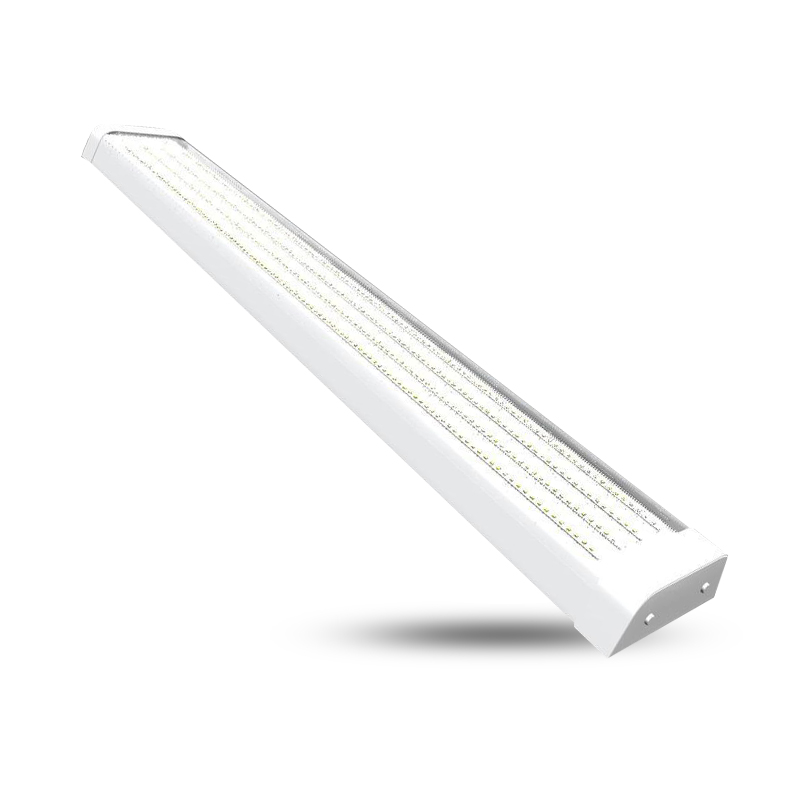

The dust-free workshop is a relatively closed body, and […]
The dust-free workshop is a relatively closed body, and the indoor personnel flow route is complicated. In order to facilitate people to scatter away from the accident scene in the shortest time in the event of an accident and ensure life safety, lighting for personnel evacuation should be provided. It is stipulated in the national code that "the evacuation indication signs should be placed on the top of the Taiping gate or the evacuation aisle and its corners on the wall below 1 meter above the ground, and the distance between the indication signs on the aisle should not be greater than 20m.", "Evacuation lighting on the passageway. The standard value of illuminance should not be lower than 0.51x". The illuminance standard is not clearly specified in the "Design Specification for Clean Room". According to the particularity of the cleanroom, the evacuation lighting set according to the illuminance of 0.51x is somewhat low, and evacuation lighting should also be set. For channel lighting, it is more appropriate to increase the illuminance to 51x. The dust-free workshop is generally a 24-hour three-shift work system, and the "constant light" method should be used for evacuation lighting.
A dedicated fire exit is a dedicated entrance for firefighters to enter a building for the purpose of putting out fires. The purpose of setting up a special fire exit is to enable firefighters to quickly and effectively enter the core part of the workshop to fight the fire. It is stipulated in the "Code for Design of Clean Room" that "red emergency lighting should be set at the special fire exit" in practical engineering. Most designers can notice that the setting of evacuation lighting should include the setting of evacuation directional sign lights and evacuation exit sign lights, but the setting of evacuation passage lighting is ignored by some designers, especially special fire exits are often ignored. The setting of red emergency lights.
Backup lighting should be set up in the cleanroom; backup lighting is used to ensure that normal activities can continue when normal lighting fails. For clean rooms equipped with diesel generators, the backup lighting power can be provided by diesel generators; for clean rooms without diesel generators, the power supply for backup lighting can be connected to a different mainline from that of normal lighting. Transformer, or separate from the low-voltage panel (or busbar) of the substation from the supply mains for normal lighting.
The spare lighting in the cleanroom should be evenly arranged in proportion, and its illuminance should not be lower than 10% of the general lighting. The lamps and lanterns can be selected with the same model as the general lighting lamps in the cleanroom, with batteries inside. Turning to emergency lighting, this method has independent functions, simple wiring, flexible application, and is less restricted by external power sources. Another method that is currently very popular, the centralized power supply type emergency lighting, is to supply power to the scattered emergency lighting lamps (without batteries) by the centralized battery power supply device. Automatically cut to the emergency power supply. When the mains power supply is restored, the power supply device will automatically switch to the mains power supply. The advantages of centralized power type emergency lighting lie inconvenient maintenance and management, long service life, strong power supply voltage stability, perfect protection function, faster starting than diesel generators, small footprint, and environmental protection. The disadvantage is that it needs to be routed separately, it is not as flexible as the emergency lighting with its own power supply, and the impact range is large in the event of a fault. Compared with the emergency lighting with its own power supply, the comprehensive price is similar, and it is slightly cheaper, which is worthy of promotion in the design of the cleanroom.
Our new models offer superb design;competitive prices and their new features give them distinct advantages over similar products from other manufacturers.